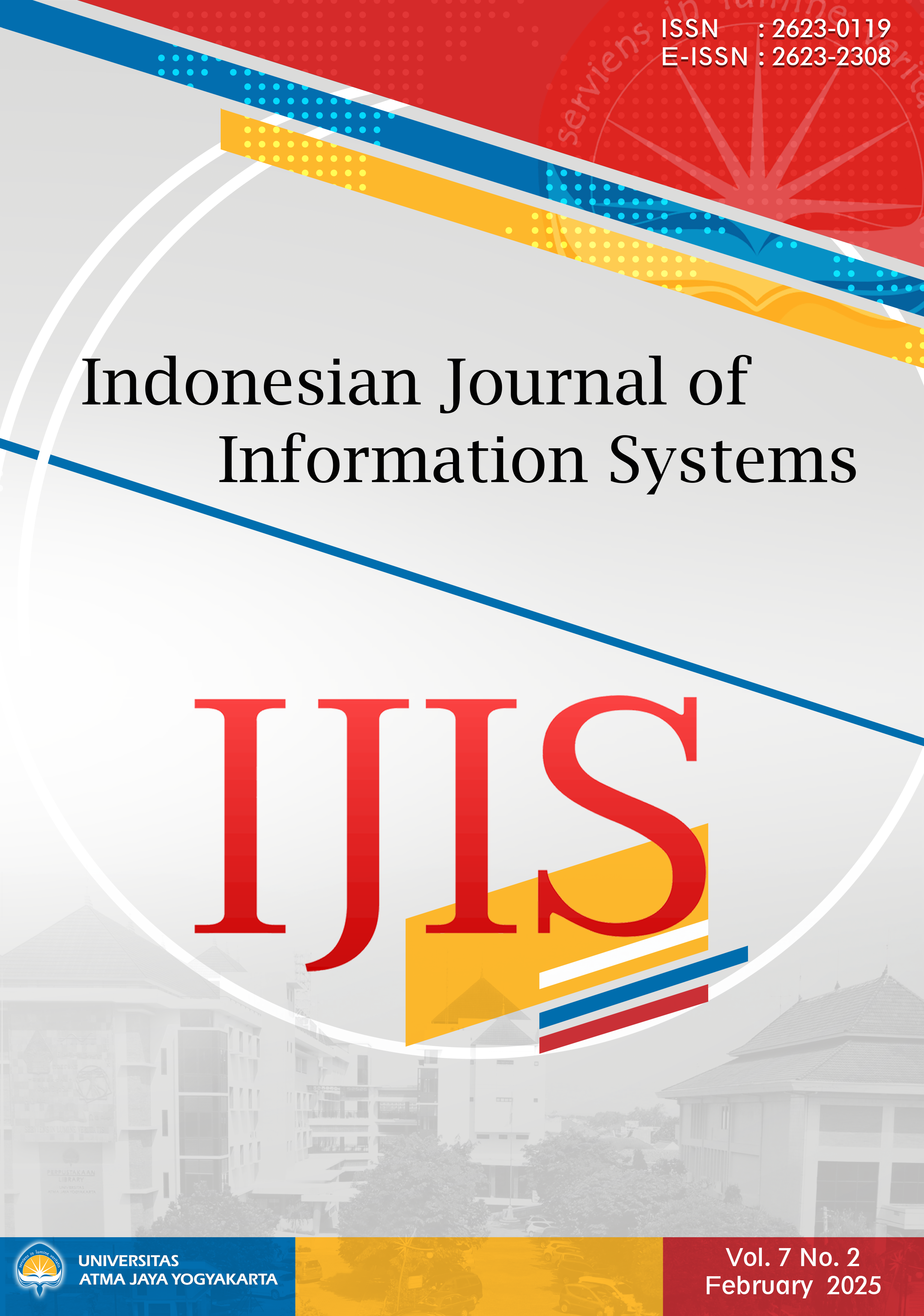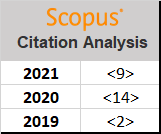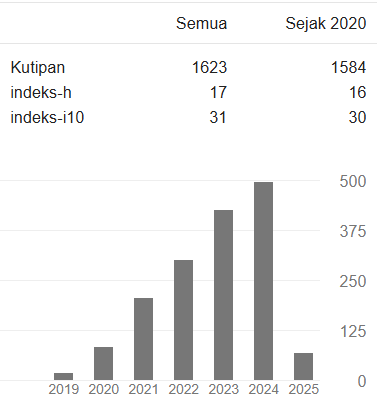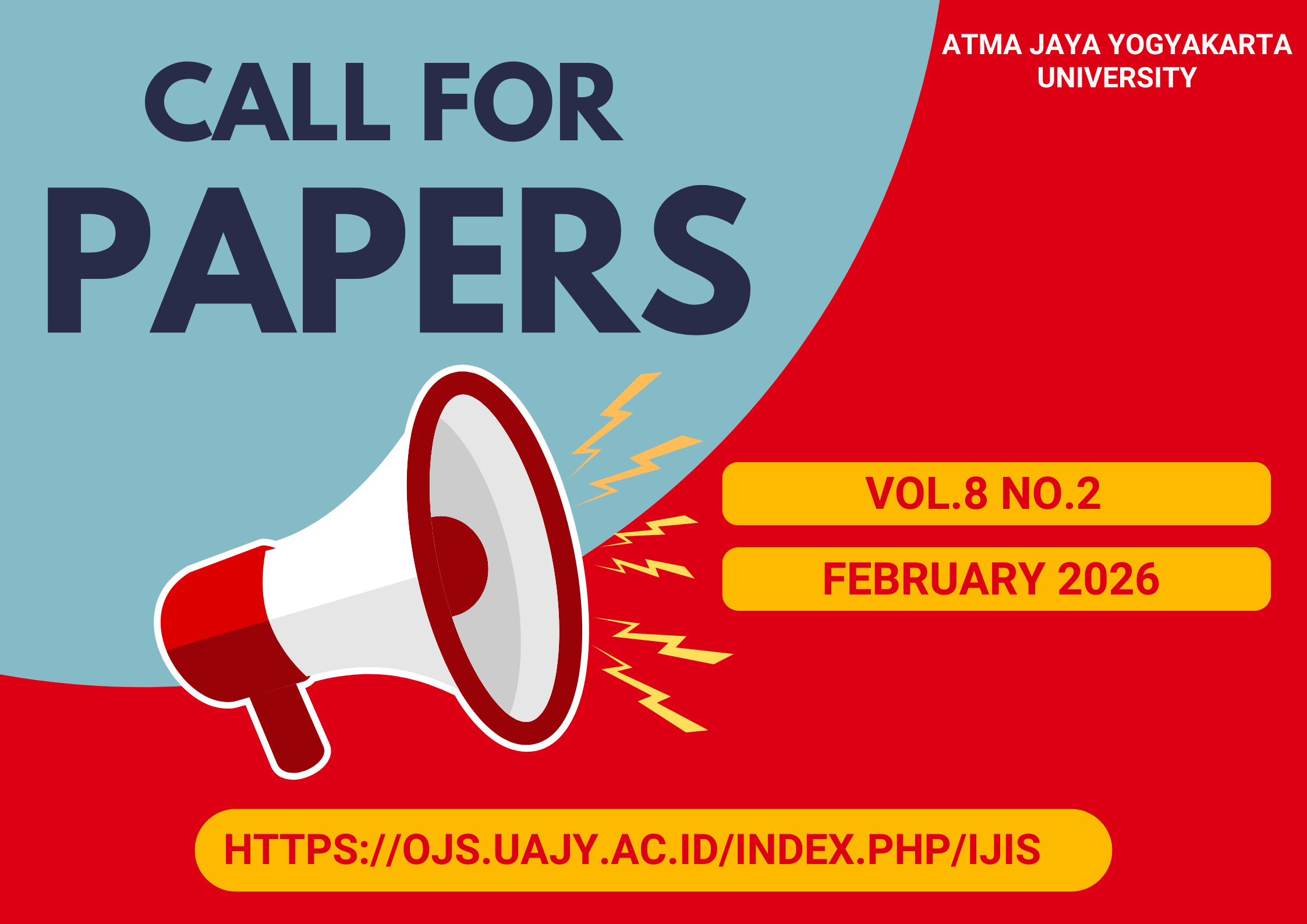Chargeback as an ICT Cost Reduction Strategy
DOI:
https://doi.org/10.24002/ijis.v7i2.10554Abstract
A leading financial institution in Nigeria, hereinafter referred to as "the Bank," has deployed Information and Communications Technology (ICT) systems to drive the Bank's strategy and operations with significant success, albeit with massive investments. However, despite the benefits derived, there have been concerns, especially with the dwindling revenues of the Bank, that the ever-increasing cost of ICT could become unsustainable. These concerns have led the Bank's management to request the ICT Department to find ways of reducing costs. This study investigated the adoption of ICT chargeback to reduce ICT costs in the Bank without impacting ICT service quality. The study utilized variables identified by prior researchers on ICT chargeback. Data was gathered from the Bank's staff using online surveys. The findings from the analysis of data provided sufficient evidence to support the assertion that ICT chargeback adoption would lead to ICT cost reduction in the Bank, consistent with the results of previous studies. The study also indicated that chargeback adoption would facilitate decision-making and more responsible usage of ICT infrastructure in the Bank. However, the study also found some negative consequences which would result from its adoption. For instance, the study showed that ICT Chargeback would discourage innovation due to cost consciousness and foster an unhealthy relationship between ICT and the business. In conclusion, the study recommended the adoption of ICT chargeback with the caveat that the negative consequences identified should be minimized to ensure that they do not vitiate the gains from the adoption.
References
[1] M. Yunis, A. Tarhini and A. Kassar, "The role of ICT and innovation in enhancing organizational performance: The catalysing effect of corporate entrepreneurship," Journal of Business Research, vol. 88, no. 1, pp. 344-356, 2018.
[2] V. Kumar, P. Verma, A. Mitta, J. A. T. Panduro, S. Singh, M. Paliwal and N. K. Sharma, "Adoption of ICTs as an emergent business strategy during and following COVID-19 crisis: evidence from Indian MSMEs," Benchmarking: An International Journal, vol. 30, no. 6, pp. 1850-1883, 2023.
[3] R. C.-N. Cheng, X. Men, P.-A. J. J. Hsieh, Z. J. Cheng, X. Cui, T. Wang and S.-H. Hsu, "The effects of IT chargeback on strategic alignment and performance: the contingent roles of business executives' IT competence and CIOs' business competence," Internet Research, vol. 33, no. 1, pp. 57-83, 2023.
[4] L. Kappelman, R. Torres, E. R. McLean, C. Maurer, V. L. Johnson, M. Snyder and K. Guerra, "The 2021 SIM IT Issues and Trends Study," MIS Quarterly Executive, vol. 20, no. 1, pp. 75-114, 2021.
[5] Gartner, "Gartner," 17 October 2018. [Online]. Available: https://www.gartner.com/en/newsroom/press-releases/2018-10-17-gartner-says-global-it-spending-to-grow-3-2-percent-in-2019.
[6] Gartner, "IT key metrics data 2021: industry measures-Executive summary," 2020.
[7] Forrester, "Global Tech Market Forecast, 2023 To 2027," Forrester Research, Inc., 2024.
[8] N. P. Nwakoby, C. P. Sidi and O. S. Abomeh, "Impact of Information and Communication Technology on the Performance of Deposit Money Banks," International Journal of Management and Sustainability, vol. 7, no. 4, pp. 225-239, 2018.
[9] Ponemon, "2022 Cost of Insider Threats Global Report," 2022.
[10] S. M. Jafari, "Strategic Cost-Cutting in Information Technology: toward a Framework for Enhancing the Business Value of IT," Iranian Journal of Management Studies (IJMS), pp. 21-39, January 2014.
[11] R. F. Andriotti, T. P. Filomena, F. J. K. Neto and R. R. Campagnolo, "A Cost management system for information technology," Base Revista de Administração e Contabilidade da UNISINOS, vol. 15, no. 4, pp. 264-274, 2018.
[12] B. Odonkor, S. Kaggwa, P. U. Uwaoma, A. O. Hassan and O. A. Farayola, "A Review of U.S. Management Accounting Evolution: Investigating Shifts in Tools And Methodologies in Light Of National Business Dynamics," International Journal of Applied Research in Social Sciences, vol. 6, no. 1, p. 51 72, 2024.
[13] D. Edberg and W. L. Kuechler, "A case study of IT chargeback in a government agency," Journal of Cases on Information Technology, vol. 6, pp. 522-539, 1 January 2004.
[14] S. Killian, "IT Chargeback Drives Efficiency," 2015. [Online]. Available: https://journal.uptimeinstitute.com/it-chargeback-drives-efficiency/.
[15] D. H. Drury, "Assessment of Chargeback Systems in IT Management," INFOR: Information Systems and Operational Research, vol. 38, no. 3, pp. 293-313, 1 August 2000.
[16] M. H. Olson and B. Ives, "Chargeback Systems and User Involvement in Information Systems - An Empirical Investigation," MIS Quarterly, vol. 6, no. 2, pp. 47-60, June 1982.
[17] Gartner, "Why, what and how organizations charge back IT cost," 2021.
[18] Gartner, "Spend Less, Get More:25 IT Containment Techniques," Gartner Inc., October 2006.
[19] E. M. Hufnagel, J. G. Birnberg and J. M. Katz, "Perceived Chargeback System Fairness in Decentralized Organizations: An Examination of the Issues," MIS Quarterly, pp. 415-430, December 1989.
[20] T. Baars, R. Khadka, H. Stefanov, S. Jansen, R. Batenburg and E. Van Heusden, "Chargeback for cloud services," Future Generation Computer Systems, vol. 41, pp. 91-103, 2014.
[21] A. Khayer, S. M. Talukder, B. Yukun and M. N. Hossain, "Cloud computing adoption and its impact of SMEs performance for cloud supported operations: A dual-stage analytical approach," Technology in Society, vol. 60, p. 101225, 2020.
[22] J. Zhen, Z. Xie and K. Dong, " Impact of IT governance mechanisms on organizational agility and the role of top management support and IT ambidexterity," International Journal of Accounting Information Systems, vol. 40, p. 100501, 2021.
[23] A. D. Diamantidis and P. Chatzoglou, "Factors affecting employee performance: an empirical approach," International Journal of Productivity and Performance Management, vol. 68, no. 1, pp. 171-193, 2019.
[24] L. G. Tornatzky and M. Fleischer, The processes of Technological Innovation, Lexington Books, 1990.
[25] S. Hasan, M. Ali, S. Kurnia and R. Thurasamy, "Evaluating the cyber security readiness of organizations and its influence on performance," Journal of Information Security and Applications, vol. 58, p. 102726, 2021.
[26] I. Ahmed, "Technology organization environment framework in cloud computing," TELKOMNIKA Telecommunication, Computing, Electronics and Control, vol. 18, no. 2, pp. 716-725, 2020.
[27] A. A. Hadwera, M. Tavana, D. Gillis and D. Rezania, "A Systematic Review of Organizational Factors Impacting Cloud-based Technology Adoption Using Technology-Organization-Environment Framework," Internet of Things, vol. 15, p. 100407, 2021.
[28] L. Li, W. He, I. Ash, M. Anwar and X. Yuan, "Investigating the impact of cybersecurity policy awareness on employees' cybersecurity behavior," International Journal of Information Management, vol. 45, pp. 13-24, 2019.
[29] K. C. Ng, X. Zhang, J. Y. L. Thong and K. Y. Tam, "Protecting Against Threats to Information Security: An Attitudinal Ambivalence Perspective," Journal of Management Information Systems, vol. 38, no. 3, pp. 732-764, 2021.
[30] M. S. A. Alqahtani and E. Erfani, "Exploring the relationship between technology adoption and cyber security compliance: A quantitative study of UTAUT2 model," International Journal of Electronic Government Research (IJEGR), vol. 17, no. 4, pp. 40-62, 2021.
[31] I. Junglas, L. Goel, B. Ives and J. Harris, "Innovation at work: The relative advantage of using consumer IT in the workplace," Information Systems Journal, vol. 29, no. 2, pp. 317-339, 2019.
[32] L. A. Clark and D. Watson, "Constructing Validity: New Developments in Creating Objective Measuring," Psychological assessment, vol. 31, no. 12, p. 1412, 2019.
[33] A. T. Jebb, V. Ng and L. Tay, "A Review of Key Likert Scale Development Advances: 1995–2019," Frontiers in Psychology, vol. 12, p. 637547, 2021.
[34] L. J. Simms, K. Zelazny, T. F. Williams and L. Bernstein, "Does the number of response options matter? Psychometric perspectives using personality questionnaire data.," Psychological assessment, vol. 31, no. 4, p. 557, 2019.
[35] F. S. Nahm, "Nonparametric statistical tests for the continuous data: the basic concept and the practical use," Korean journal of anesthesiology, vol. 69, no. 1, pp. 8-14, 2016.
[36] R. Heale and A. Twycross, "Validity and reliability in quantitative studies," Evid Based Nurs, vol. 18, no. 3, pp. 66-67, July 2015.
[37] C. Quintão, P. Andrade and F. Almeida, "How to Improve the Validity and Reliability of a Case Study Approach," Journal of Interdisciplinary Studies in Education, vol. 9, no. 2, pp. 264-275, 2020.
[38] K. S. Taber, "The Use of Cronbach's Alpha When Developing and Reporting Research Instruments in Science Education," Research in science education, vol. 48, pp. 1273-1296, 2018.
[39] J. J. Vaske, J. Beaman and C. C. Sponarski, "Rethinking Internal Consistency in Cronbach's Alpha," Leisure Sciences, vol. 39, no. 2, pp. 163-173, 2017.
[40] I. Ahmed and S. Ishtiaq, "Reliability and validity: Importance in Medical Research," Methods, vol. 12, no. 1, pp. 2401-2406, 2021.
[41] L. Sürücü and A. Maslakçi, "Validity and Reliability in Quantitative Research," Business & Management Studies: An International Journal, vol. 8, no. 3, pp. 2694-2726, 2020.
Downloads
Published
How to Cite
Issue
Section
License

This work is licensed under a Creative Commons Attribution-ShareAlike 4.0 International License.
Indonesian Journal of Information Systems as journal publisher holds copyright of papers published in this journal. Authors transfer the copyright of their journal by filling Copyright Transfer Form and send it to Indonesian Journal of Information Systems.

Indonesian Journal of Information Systems is licensed under a Creative Commons Attribution-NonCommercial 4.0 International License.

















